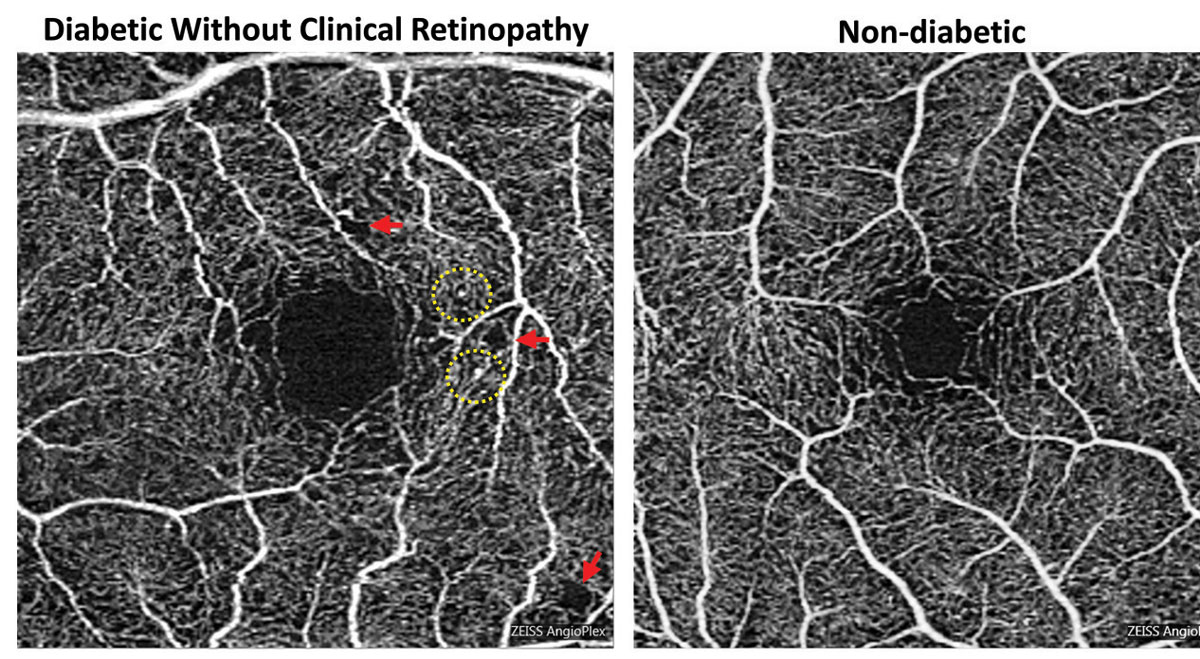 |
|
Researchers observed a weak variable correlation between OCT and OCT-A characteristics that present in nonproliferative DR. Photo: Carolyn Majcher, OD. Click image to enlarge. |
Given that half of people with diabetic retinopathy (DR) are unaware they have it, identifying biomarkers of the early nonproliferative stage of the disease could help promote earlier treatment and better visual outcomes. To see how retinal imaging might be able to help, a new study published in Retina assessed the quantitative characteristics of OCT and OCT angiography (OCT-A) that might aid in sooner DR detection. Its findings revealed photoreceptor and vascular distortions visible in both imaging modalities during the early stage of the disease. The comparative analysis also showed that the OCT intensity ratio inner segment ellipsoid (ISe)/retinal pigment epithelium (RPE) had the best sensitivity for early DR detection.
The small retrospective, cross-sectional study included 20 control patients, 15 patients with diabetes but no retinopathy and 22 patients with mild nonproliferative DR. The researchers evaluated various OCT and OCT-A characteristics and compared the data between groups.
The study authors reported in their paper that the “quantitative OCT analysis indicated that the ISe intensity was significantly trending downward with DR advancement.” On the other hand, “comparative OCT-A revealed vessel diameter index, perimeter index and skeleton density as the most sensitive characteristics of DR.”
Notably, the comparative analyses demonstrated a weak variable correlation between the characteristics of OCT vs. OCT-A. The study authors wrote that this observation “suggests that OCT and OCT-A are providing supplementary information for DR detection and classification.”
In conclusion, the data demonstrated that on OCT, ISe/RPE intensity ratio had the highest specificity for DR, while on OCT-A, vessel diameter index, perimeter index and skeleton density were most sensitive for early DR detection.
“Adoption of comparative OCT and OCT-A analyses for clinical practice would be beneficial for early screening of DR as well as instructive for follow-ups and evaluation of therapeutics,” the researchers concluded in their paper.
Le D, Dadzie A, Son T, et al. Comparative analysis of OCT and OCT angiography characteristics in early diabetic retinopathy. Retina. February 7, 2023. [Epub ahead of print]. |


